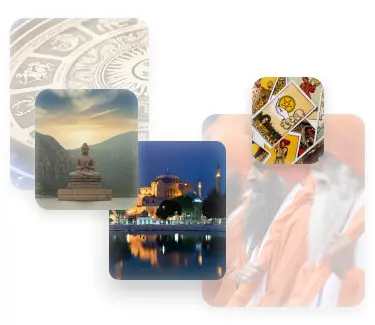Adherents of the teachings of Hinduism live in all countries of the world with rare exceptions.
Hinduism
Hinduism is considered one of the most mysterious religions. It combines a huge number of traditions, philosophical ideas and concepts that are very different from each other.
Spreading all over the globe, Hinduism has taken a primary place among the popular creeds in India.
There are more than one billion followers worldwide.
As a religious movement, Hinduism originated between the V-I centuries BCE. The followers of Hinduism themselves believe that this culture is rooted in the epochs of the emergence of human civilization itself.
The media in their publications tell about the prosperity of the religion of Hinduism. New temples and religious schools are being built in India, which makes it possible to spread religion and maintain its importance on a global level.
The mass media claim that spiritual teachers have begun to gain popularity since the 21st century. Western media have noted the growing demand for sages-gurus, as well as Hindu scriptures.
These trends have led to the fact that Western religious figures have adopted part of the vocabulary and symbols of the religion of Hinduism.
Hinduism a brief description of religion
Modern religious scholars do not single out clear landmark dates that define the history of Hinduism. The origin of religion is also not associated with specific historical events.
In the history of Hinduism, researchers distinguish two periods — Vedic and Brahmanic.
Modern Hinduism has adopted most of the deities and rituals from the Vedic tradition.
From the 6th to the 2nd century BCE, adherents of Hinduism compiled and recorded Puranas — ancient Indian writings about gods, demons and their relationships with people.
The third century BCE is marked by a hidden struggle for leadership between Buddhism and Hinduism. This led to Hindu teachings being systematized during the reign of Emperor Ashoka. In the process of performing rituals, adherents of Hinduism abandoned the practice of sacrifice.
In the 2nd century BCE, several schools emerged from Hinduism: Nyaya, Sankhya, yoga, Vedanta, Mimansa and Vaisheshika.
Between the 4th and 10th centuries CE, Hinduism gradually displaced Buddhism from the territory of India.
Hinduism continued its spread in Asia. But in the 15th century it was completely supplanted by Islam and Buddhism.
A new period in the history of Hinduism is connected with the Muslim conquests in India. Many followers of Hinduism have been converted to Islam.
Muslim rulers treated Hinduism as idolatry. However, there were exceptions. For example, Emperor Akbar, who sought to unite conflicting creeds.
In the 5th-6th centuries, Christian communities began to appear on Indian territory, which also led to a confrontation between religions.
The further development of Hinduism led to the emergence of the science of Indology in the 19th century.
In the 20th century, famous philosophers Sri Aurobindo and Bhaktivedanta Swami Prabhupada translated Hindu texts and distributed them around the world. This is how yoga became popular in the West.
The Essence of Religion
Hinduism is translated from Sanskrit as “the eternal path”.
The essence of Hinduism is the worship of certain deities. Every believer chooses a certain school of Hinduism and worships the gods that are accepted in it.
The soul in Hinduism is the atman — the absolute, the eternal essence. The goal of a person is to know his atman. It is generally believed that one who is fully aware of his soul attains moksha — liberation.
Hindu believers belonging to dualistic trends claim that one can achieve moksha not only through the knowledge of one’s soul, but also through love for the chosen deity.
There is also an atheistic trend in Hinduism that denies the existence of gods.
Consider the main components of the religion Hinduism:
- Dharma is a list of principles hat everyone chooses for a proper life.
- Samsara is a cycle of rebirth. The soul after death can be reborn and appear in a different bodily form.
- Karma is the law according to which the soul suffers for the sins and deeds committed.
- Moksha is liberation from the material world, the cessation of samsara.
Commandments
Due to the large number of schools in different directions of Hinduism, the commandments differ.
There are 5 main commandments inherent in the religion of Hinduism:
- There is one truth in the world, although its names may be different.
- All people in the world are one big family.
- Your life depends only on the results of your actions.
- Morality is the highest manifestation of caring for all living things.
- When evil takes over, the gods descend to earth in a certain guise to help restore justice.
Also in Hinduism, the commandments are divided into yama – prohibitions, and niyama – prescriptions.
- The religion of Hinduism includes the following prohibitions:
- Ahimsa – non-harm to the living.
- Satiya – abstinence from lying.
- Asteya – prohibition to take other people’s things.
- Brahmacharya – it is not allowed to lead a riotous life
Principles of harmony:
- Siaucha – a person should remember about the purity of himself and his soul.
- Santosha – there must be a positive attitude to life.
- Tapas is the principle of accepting non–rigid austerity.
- Svadhiya – creating a better version of yourself.
- Ishvarapravidhana – obedience to the flow of life.
Rituals
The traditions of Hinduism include a large number of rituals, since this religion is polytheistic.
Let ‘s consider the main rituals:
Reciting mantras. The rite is a daily reading or chanting of prayers. Believers say that this ritual helps to focus and concentrate on the spiritual. Usually through mantras people thank the deities and show their devotion. Sometimes a rosary is used when reciting a mantra.
Giving gifts to a pregnant woman. The ceremony is performed at the 7th month of pregnancy. At the beginning of the day, a pregnant woman is washed while reading prayers. Relatives put various gifts on a woman’s lap. It can be fruits, decorations and more. During the ceremony, it is customary to distribute food, which consists of yellow rice.
A rite at the birth of a child. Initially, in the first days of the child’s life, they watered him with a solution of honey and water. At the onset of the 6th day, a prayer was read to the god Varuna. On the same day, the child was allowed to start breastfeeding. Before that, the chest was washed with an infusion of kushva grass. At the moment, the child is allowed to feed the mother’s milk immediately, and on the 6th day a ritual is performed in which the baby is given rice porridge and dressed in clothes donated by his grandmother.
Holidays
Consider the main holidays in the religion of Hinduism:
Makara-sankranti. The holiday is celebrated on January 14. Dedicated to the deity Surya. On this day, believers bathe in the Ganges River.
Vasanta-panchami. The date of the celebration is January 26. A festival is held in honour of Saraswati, the goddess of wisdom. On this day, children are taught to write their first words. It is also customary to fly kites. Believers wear everything yellow.
Holi is a spring festival. The most colourful holiday, celebrated in early March. On this day, festivals of colours are held. At night it is customary to burn an effigy. There are also fights and jumping over the fire.
Holy places
Consider the main places of pilgrimage:
Kurukshetra is a city in India. A popular place among believers, especially on the days of eclipses. According to legend, during this period the waters in the rivers are connected. Believers perform ablution, which frees them from sins.
Kedarnath is a village located in the Himalayas. It is a place of worship of the deity Shiva. According to legend, Shiva in the form of a bull created the peaks of Shiva lingu.
Mathura is a city in India. Krishna Janmabhumi, the temple where Krishna was born, is located in this place. The Yamuna River flows in the city, where sacred ablutions are performed.
Biography of the creators
In the religion of Hinduism, there is no creator. It also lacks clear dogmas. This is due to the large number of philosophical doctrines comprising the religion.
Modern Leaders
Hinduism is a versatile system of beliefs and philosophies characterized by a certain community of symbols, rituals of sacred places. Religion lacks an administrative structure and a concept of leadership. In India itself and in any other country of the world, philosophers and practitioners who consider themselves to belong to various schools and currents of Hinduism conduct diverse social and religious work.
Scandals
Throughout history, adherents of Hinduism have been subjected to numerous persecutions, religious oppression and systemic violence, which took the forms of forced conversion, taxation on religious grounds, genocide, and the destruction of shrines.
The most tragic page of the last century is the death of hundreds of thousands of people during the partition of India in 1947.
The most significant internal contradiction can be considered religion’s support of the caste system in Indian society.



 RU
RU
